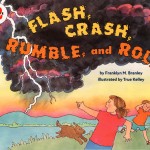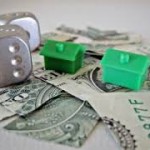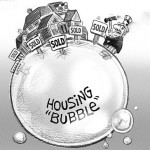
An Indicator of Bubbles in the Housing Market
Posted by ludw1086 on Mar 5, 2013 in Blog | Comments Off on An Indicator of Bubbles in the Housing MarketThe housing bubble of 2008 was created by a crowd rushing into the housing market. Some have argued that there was no way to determine whether there was a bubble in housing, yet in the Crisis of Crowding, a few simple measures are shown that help indicate that the housing market had become relatively very expensive by 2007.
The measure is very simple. It considers mortgage rates, housing prices, and the average income of people to determine whether buying a house has become relatively more or less expensive for the average person. The measure is computed as follows:
Step 1: Download monthly or yearly data on median or average housing prices and income for a particular city or for the entire United States.
Step 2: Download monthly or yearly 30-year fixed rate mortgage rates for a region.
Step 3: Compute the mortgage rate required to buy a particular house given mortgage rates and housing prices.
Step 4: For each month or year, divide the annual mortgage payments required by the annual income. The larger this rate, the more expensive buying a house is for the typical person. The smaller it is, the cheaper buying a house is for the average person.
Recently, some of the students in my class downloaded some data and recomputed this measure. They measured “expensiveness” of houses for the USA and for the city of San Francisco. They obtained mortgage rates from Freddie Mac, median income from the U.S. Census Bureau and RAND, and median home prices from Case-Shiller and the U.S. Census. They then graphed the mortgage cost divided by the median income for both regions (see below).
From the picture, one can see the “bubble” as homes became more expensive. Homes in San Francisco became 70% more expensive from 1999 to 2007. Homes in the United States became 20% more expensive by this measure. Today, despite the many worries about housing prices, San Francisco homes are just slightly more expensive than 1999, while the average US homes are much cheaper.
The beauty of this analysis is that it can be applied to any desired metropolitan area that an investor is interested in. Of course, this measure is simply an indicator of expensive versus cheap. In today’s economy, many other factors are at play, including the economy, such as the number of people unemployed; institutional factors, such as the difficulty in obtaining a mortgage loan; and even psychological factors, that is, people are less eager to buy homes after the carnage of 2008.[1]
But if you’re looking for a good trade in housing, you should probably look East. Is China’s housing market a bubble waiting to burst? There are several ways to take advantage of this view, including shorting China equity or real-estate ETFs like TAO or FXI or buying put options on them.[2]
[1] I would like to thank Priya Baldua, Mona Vyawahare, Guoqian Shao, and Ewlin Varghese.
[2] At many brokerages, it is very difficult to borrow TAO shares and short the stock.







